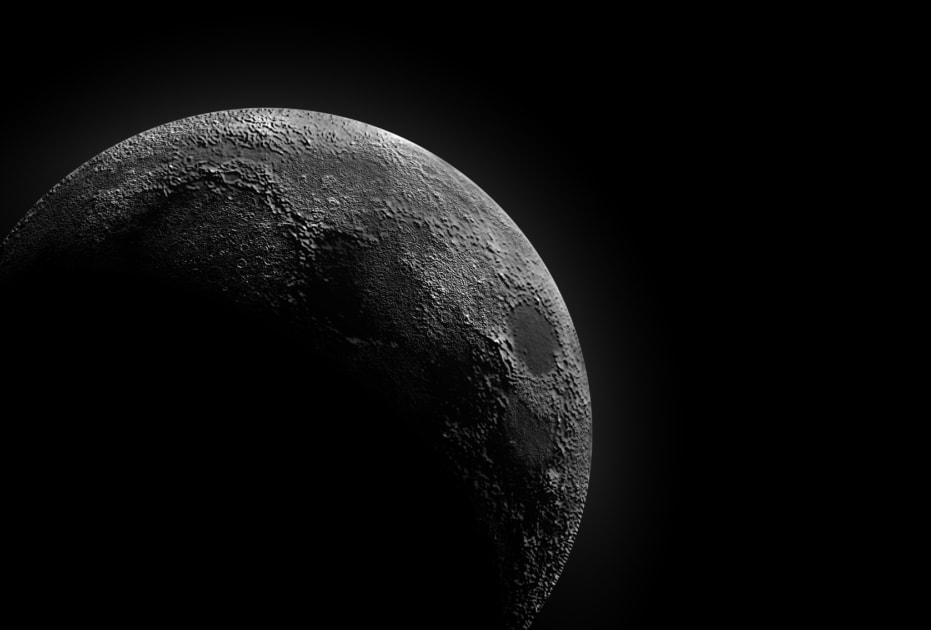"Exploring the Dark Side: The Mystery of the Moon's Surface"
The Moon, our closest neighbor in space, has long captivated our imagination with its silvery glow and enigmatic appearance. However, upon closer inspection, the Moon's surface is not quite what we may have expected. Rather than a pristine, white landscape, the Moon is covered in a layer of fine dust and rocks that give it a dark, almost black appearance. So why is the Moon's surface so dark, and what can it tell us about the history and formation of our celestial companion?
The primary reason for the Moon's dark color is the presence of regolith, a layer of material that covers the surface of the Moon. Regolith is made up of tiny fragments of rock and dust that have been ground down over billions of years by meteorite impacts and other processes. This material is primarily composed of basalt, a type of volcanic rock that is rich in iron and magnesium. These elements give the regolith its dark color, similar to the basaltic lava flows that we find on Earth.
Another factor that contributes to the Moon's dark appearance is the absence of an atmosphere. Unlike Earth, which has a thick layer of gases that protect us from the harsh radiation of space and cause weathering and erosion on the surface, the Moon has no such shield. As a result, the regolith is not exposed to the same level of weathering and erosion that we see on Earth, and it remains largely unchanged over time.
While the Moon's dark surface may be fascinating to look at, it also has important scientific implications. By studying the composition and age of the regolith, scientists can learn about the formation and evolution of the Moon, as well as the history of our solar system. For example, by analyzing the isotopes in the regolith, scientists have been able to determine that the Moon is about 4.5 billion years old, roughly the same age as the solar system itself. They have also discovered evidence of ancient volcanic activity, impact events, and even the presence of water ice in some regions of the Moon.
In recent years, there has been renewed interest in the Moon as a potential destination for human exploration and even colonization. Understanding the composition and properties of the regolith is a critical part of planning any future missions to the Moon, as it can affect everything from the design of the landing craft to the materials used for building habitats and other structures.
In conclusion, the Moon's dark surface is a testament to its unique geology and history, and it holds valuable insights into the formation and evolution of our solar system. Whether we are studying it from afar or exploring its surface up close, the Moon remains one of the most fascinating and mysterious objects in our sky.
